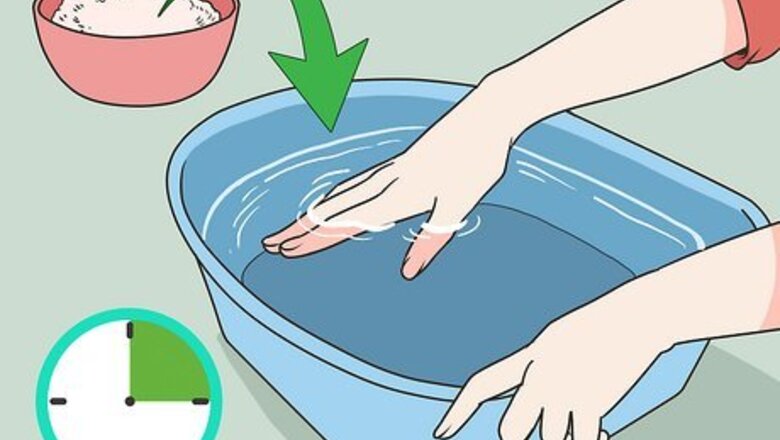
views
- Mix 3 tbsp (51 g) of Epsom salt with 3 qt (2.8 L) of warm water in your bathtub or a large bucket. The water softens the nail while the salt acts as an antibacterial.
- Then, soak your feet for 15 minutes. Spend a few minutes massaging the skin around your toe to reduce the inflammation.
- Dry your feet thoroughly then apply an antibiotic cream to the inflamed skin. Then, relieve pressure by sliding a piece of cotton or gauze under your toenail.
Soaking Your Foot
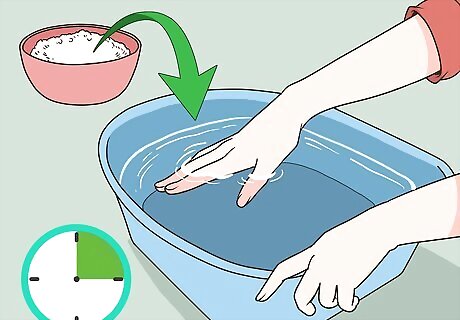
Prepare a warm foot bath. The purpose of soaking your affected toe/foot in a warm bath is essentially two-fold: to reduce the discomfort and to soften the toenail in efforts to either trim it or put something under it to relieve the pressure. Podiatrist Mark Co suggests "soaking your feet in Epsom salts by mixing 3 US qt (2.8 L) of water with 3 tbsp (51.2 g) of Epsom salts. Soak in this bath for about 15 minutes." Co explains that you "can use table salt instead if you don't have any Epsom salt at home." Salt acts as a natural antibacterial, but other ingredients you can add to the water to deter a potential infection include white vinegar, hydrogen peroxide, bleach, and iodine solution. The warmer you make a salt bath, the more fluid you'll pull out of your toe, which is good for reducing the swelling. If you can find on, borrow or buy a little foot jacuzzi, then use that for the bath because the jets will provide better water circulation and a gentle foot massage.
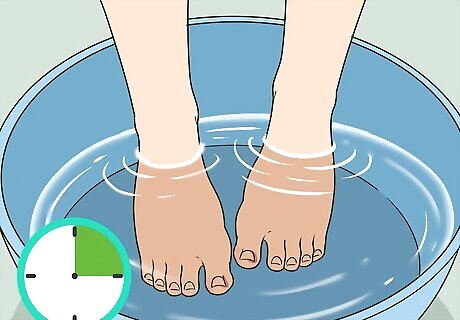
Soak your foot and affected toe. Podiatrist Mark Co suggests "soaking your feet in the salt bath for about 15 minutes. Do this routine anytime the nail feels painful as it's growing out." Depending on the results, you can repeat the foot bath three to five times daily, so don't throw out the water if that's your plan. If you use Epsom salt, you'll notice that your feet look quite "pruned" after 15 minutes — it's a sign fluid was sucked out of your feet/toes. Flexing your toes repeatedly while in the bath will help with blood circulation. If swelling is a particular problem in your toe, then follow the warm salt bath with cold therapy (ice wrapped in a thin towel) until your toe feels numb (about 10 minutes). Ice helps reduce acute inflammation and dull the pain.
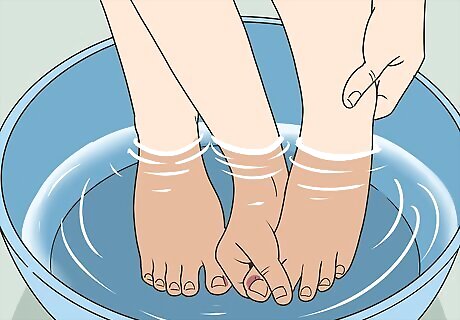
Massage your toe in the bath. While your toe is soaking in the warm bath, periodically massage the inflamed tissue gently in order to help reduce the inflammation. With the massage, you might notice a little pus or blood release from your toe into the water, which is fine, and it will likely reduce the pressure and pain in your toe. Use your thumb and forefinger to lightly massage the most inflamed part of your toe, starting from the most distal part and pushing towards your ankle. Spend only about five minutes or so of the bath time massaging your toe, as much longer might actually irritate it.
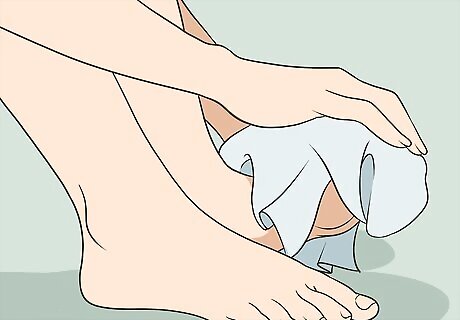
Dry your entire foot thoroughly. Once you're finished with the warm foot bath and remove your foot from it, make sure to thoroughly dry it with a clean towel. Keeping your toe dry is important because bacteria and other potential pathogens, such as fungus, prefer moist, warm conditions in which they can flourish and reproduce. Podiatrist Mark Co suggests taking a warm foot bath "whenever it feels like the nail is causing you pain." After you've dried your toe/foot, elevate your leg on a few cushions while you sit in order to promote blood drainage out of your foot, which helps combat inflammation.
Treating Your Toenail After the Bath
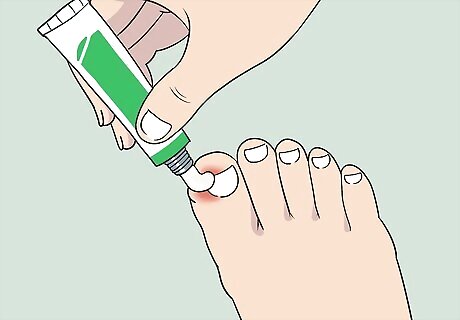
Apply antibiotic cream. Over the course of a day, apply antibiotic cream, lotion or ointment to your affected toe at least a couple of times, particularly just before you go to bed in the evening. After the cream has absorbed into the soft tissue surrounding the inflamed toe, apply a sanitized bandage. Make sure to change the bandage each time you apply antibiotic. Some compounds around the house that have antibiotic properties include Clorox bleach, hydrogen peroxide, white vinegar, baking soda dissolved in water, iodine solution and fresh lemon juice. Be warned that most home remedies that act as antiseptics will sting if the skin has already been cut by a sharp ingrown toenail. Colloidal silver is a powerful antibiotic, antiviral, and anti-fungal that doesn't sting or irritate the skin when applied. It can be found at most health food or nutritional supplement stores.
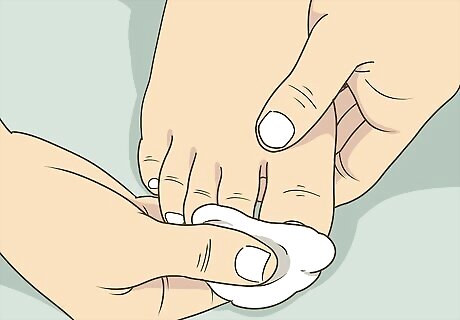
Slip some cotton or dental floss under the toenail. After soaking your foot in the warm bath, the ingrown toenail will soften up and allow you to slip a small piece of cotton, gauze, or bunched up dental floss (clean of course) underneath the nail, which will provide some padding for the sensitive soft tissue near the nail bed. Carefully pull back the inflamed skin and lift up the toenail with a nail file, or something similar, and tenderly push the cotton material underneath it. Change the cotton material daily. It may take one to two weeks for the ingrown toenail to grow enough so that it doesn't poke into the skin any longer. Avoid attempting “do-it-yourself" surgery by cutting into the toenail in an attempt to provide pain relief, because it can actually cause the condition to worsen.
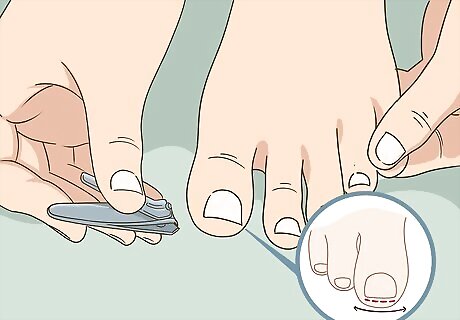
Trim the toenail properly. Once the toenail has grown and is long enough to clip, then don't make the same mistakes again. Instead, trim the toenail straight across and don't taper the edges or clip them at angles. Also, refrain from cutting them too short as it will further agitate the injured toe. If you have your toenails done by a pedicurist, tell them to trim your nails straight across and not too close to the skin. As a guideline, you should be able to fit your fingernail under the sides and end of the toenail. If home care and changing your trimming technique doesn't help or prevent your ingrown toenail issue, then see your family physician or a foot specialist (podiatrist) for advice and/or treatment.
Assessing Your Toenail
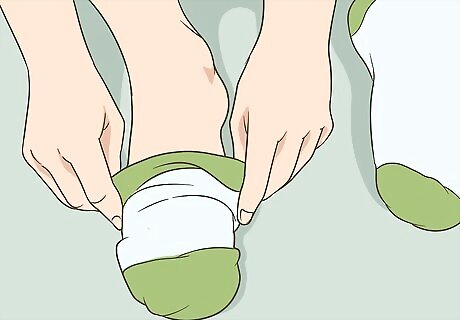
Determine the cause of the pain. If one of your big toes (or any other toe) gets inflamed and starts to hurt, take off your socks or nylons and take a closer look at it in order to determine the cause of the pain. If the condition develops slowly, getting worse over the course of many days, and you have a history of trimming your toenails short and/or wearing tight or narrow shoes, then you're likely dealing with an ingrown toenail. In most cases, it's easy to see where the toenail is digging into or piercing the soft tissue surrounding the nail bed. In addition to pain and swelling, other signs to look for include redness and tender to touch, along one or both sides of the nail. Ingrown toenails are more common in adolescence and among athletes, especially males.
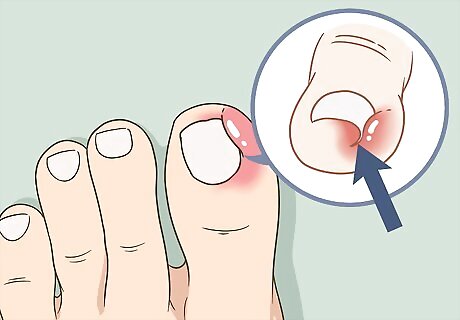
Look for signs of infection. The most serious consequence of an ingrown toenail is a bacterial infection stemming from a breach in the skin surrounding the nail bed. An infected ingrown toenail will get even more swollen and tender, quite firm and warm to touch, and eventually discharge pus that smells foul. Because of the warmth and swelling, usually some skin will peel off and look like a blister. An infection swells because your immune system sends white blood cells to kill any bacteria within the injury (which is good), but sometimes the bacteria proliferate faster than the immune cells can contain them. If an infected toe doesn't go away within a week and/or seems to be spreading beyond the affected toe, then see your doctor about it. Your doctor may remove the ingrown nail wedge surgically. If you trim your toenails by tapering the corners such that they're curved with the shape of your toe, you're encouraging the toenail to grow into the skin on the sides.
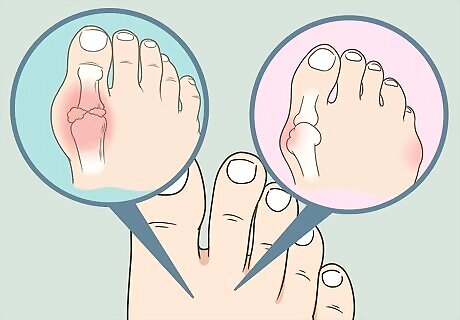
Rule out other common causes of toe pain. There are a number of other painful conditions that appear similar to an ingrown toenail that you should be familiar with. Relevant examples include gout (an inflammatory type of arthritis), bunions (chronic toe sprain leading to deformity), broken or dislocated toes, rheumatoid arthritis, necrosis (tissue death due to lack of blood supply), neuropathy related to diabetes, neuromas (benign tumors in the small nerves of the feet), fungal infection. A gout attack comes on quickly, usually within hours, and creates intense pain and inflammation in the big toe. Gout is dietary related — from eating too many purine-rich foods such as seafood and organ meats. A bunion also affects the big toe and is caused mainly by wearing narrow shoes over many years. It's essentially a chronic joint sprain. The tell-tale signs are a crooked toe and achy, arthritic-like pain. Stubbing your toe or other foot injuries can trigger ingrown toenails.

















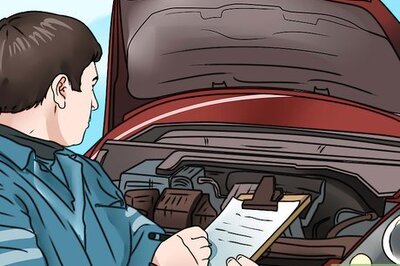


Comments
0 comment